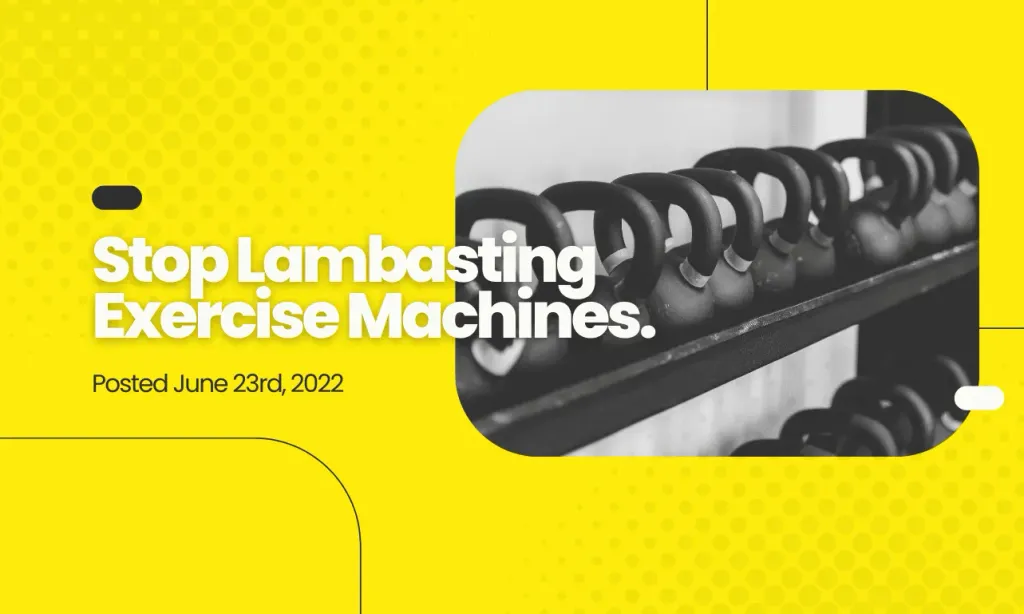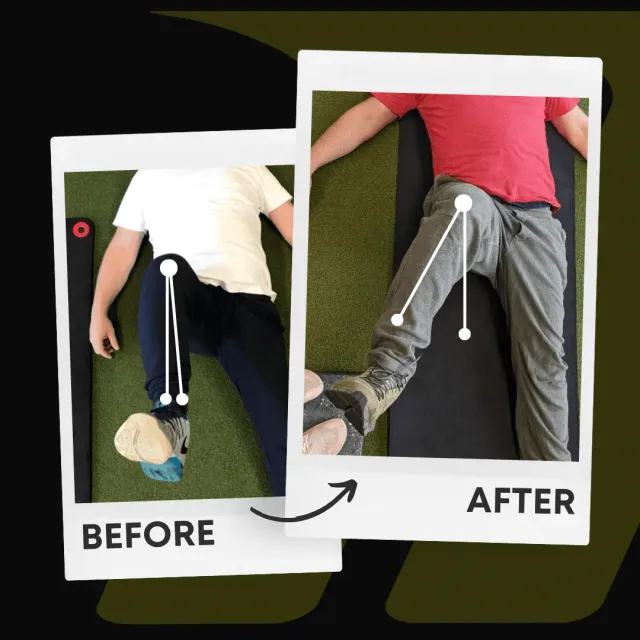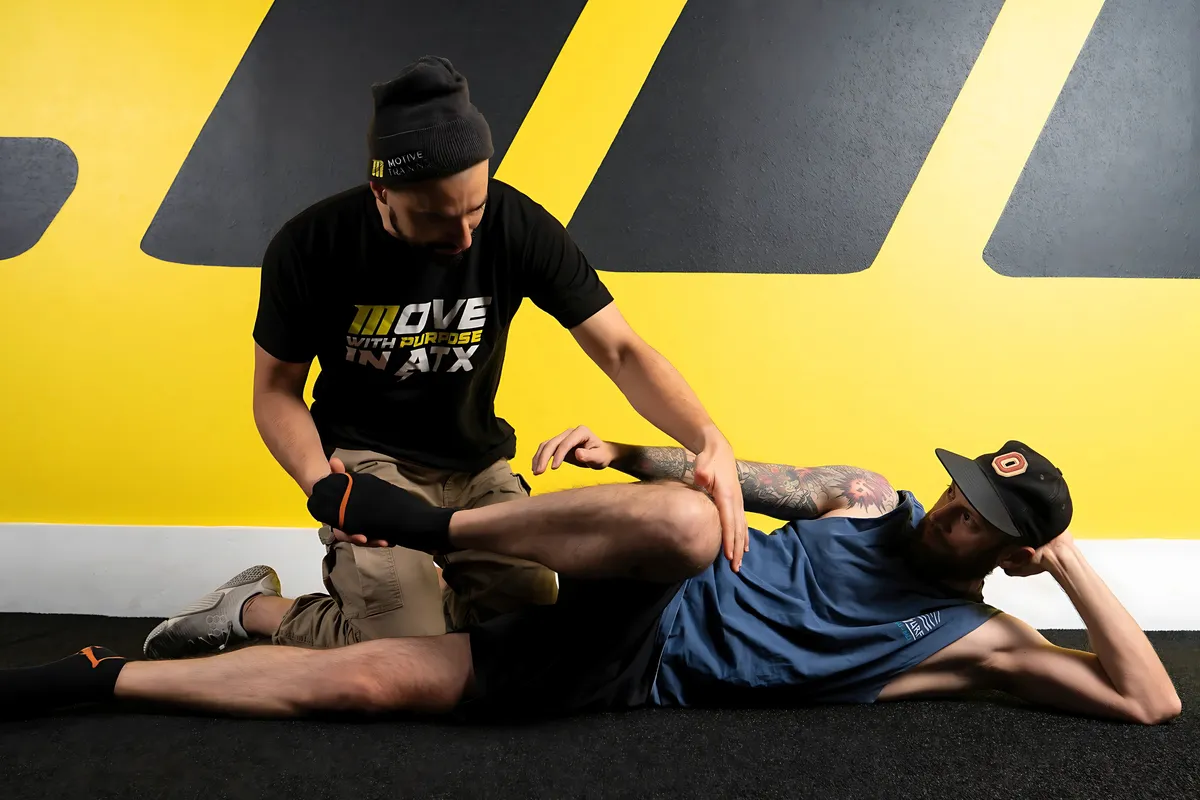Stop Lambasting Exercise Machines.
June 24, 2022 | General

If you’ve ever stepped foot into Motive Training in Austin, TX, you know we don’t have exercise machines at all. We use squat racks, free weights, barbells, dumbbells, sandbags; you name it. However, we don’t have cable machines, selectorized equipment, exercise bikes, or anything along those lines. These are the typical machines you might find at Planet Fitness or Gold’s Gym.
We’re a small boutique gym, and we don’t have room for it. But in a perfect world, I would deck out a 10,000 SF space with EliteFTS and Prime Fitness equipment to have the variety if I wanted it. EliteFTS racks are some of my favorites.
You don’t need machines, and neither do we, hence why we still crush workouts and get people incredible results without them. However, I think it’s time we stop letting trainers and fitness enthusiasts get away with criticizing workout equipment.
What Do I Mean By “Machines?”
Part of me wants to nerd out here because exercise machines are cool as hell, but many of you might fall asleep. So, let’s make this simple.
Workout machines, like a selectorized chest press or a leg extension, use simple machines (e.g., pulleys, levers, cams, wheels) to convey weight to you. For instance, when you do a leg extension, you aren’t physically moving the weight; you’re pushing against a lever using pulleys or cams to pick up the weight. So, every part of a machine (e.g., a standard pulley) changes the mechanical advantage of the overall machine relative to the resistance.
Have you ever noticed that lifting weights with machines differs from gym to gym? That’s because different equipment uses different mechanisms to convey weight to you. It’s not because you got weaker or stronger in one session. Sorry, folks.
For those of you wondering why you can tricep pulldown the whole stack in some gyms, read this article. It’ll show you exactly how pulley systems work to give you more mechanical advantage. Aka, you’re strong, but not that strong; the system does a great job of conveying less weight to you. Sorry again.
If machines make things easier, they must be useless, right? Not quite.
Do you Know Who Invents Exercise Machines? Geniuses.
Nautilus comes to mind as one of the pioneers in the gym equipment industry, even though many newcomers won’t recognize the brand. For those unfamiliar, Nautilus created exercise equipment in the 80s and 90s but has since merged with brands like Schwinn and Bowflex, so they now sell all kinds of strength training equipment.
The founder of Nautilus, Arthur Jones, created and popularized a specific cam mechanism for his equipment, shaped like a nautilus (a mollusk). Dr. Andro from SuppVersity explains in his article,
The idea behind the concept is that the nautilus-shaped cam would vary the lever over the full range of motion in a way that the intensity would peak at a selected point of the full range of motion. Usually this was and still is, when the muscle is fully contracted and the lever is the shortest.
In other words, Arthur designed his equipment to make exercises progressively more difficult toward the end of the range of motion. The goal? Safely target muscles where they’re biomechanically weaker to gain a better training effect.
Prime Fitness went one step further with this idea and made adjustable cams, which they patented as SmartStrength™. The adjustable cams allow the user to change peak intensity so that you can increase the amount of work being done at any part of an exercise’s range of motion. You can see this demonstrated here with the Prime Fitness TorqueArm. Please note: this is plate-loaded and not their cam technology, but it’s the same idea.
It’s pretty freaking cool, which is why I wish I had a fully-loaded Prime Fitness gym. One day…
But, Do Machines Work?
If you read the SuppVersity article above, you’ll note that machines don’t work better than other strength training equipment, like barbells. But that’s only when you look at the research, which tends to over-extrapolate.
If you compare something like a leg press to a barbell squat, chances are you’re going to see similar strength gains, changes in health outcomes, improvements in muscle size, joints, and performance, etc. (1) But, as the researchers concluded in the referenced study,
These findings suggest that both free weights and machines can improve functional outcomes, and that the extent of transfer may be specific to the given task.
This reminds me of my quote, which I referenced in my EliteFTS article,
specificity means that an outcome is determined by the specificity of the input(s).
If you use machines in a way that impacts progress for your goals, then they are instrumental. If you hop on a machine and just do 300 reps of arms, then you’re probably not going to gain any more benefit than doing free weights.
This brings us to the most critical point of all.
Sometimes, Workout Equipment Is Too Smart.
Inventors like Arthur tried making training and working out more accessible to get better results in less time. But, in doing so, they created machines that were mainly misunderstood.
Sure, cardio machines like rowing machines, treadmills, stationary bikes, etc., are pretty easy to use. However, the rest of the equipment at your local gym is more nuanced and requires a better understanding of the intended outcome.
Everything you see in your local gym is manufactured with precise intent. So take your pick: chest machines, cardio machines (Peloton bike, anyone?), core equipment; all of it was designed to make your body better and to address your fitness goals.
But if you don’t know how to use or program them effectively with your other workouts, you’re probably missing out on strength, health, and performance gains.
So before you go bashing equipment in your gym, personal trainers, maybe you should learn more about what they were designed to do and use them correctly.
Are you interested in more content? Want to see more of my rants? Subscribe to our newsletter and stay up to date on our latest content on social media.
Also, be sure to check out more of our blogs here.
References:
Written by:
 Brian Murray, FRA, FRSC
Brian Murray, FRA, FRSC
Founder of Motive Training
We’ll teach you both how to move with purpose so you can lead a healthy, strong, and pain-free life. Our headquarters are in Austin, TX, but you can work with us online by signing up for KINSTRETCH Online or digging deep into one of our Motive Mobility Blueprints.

